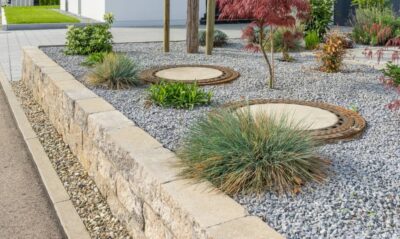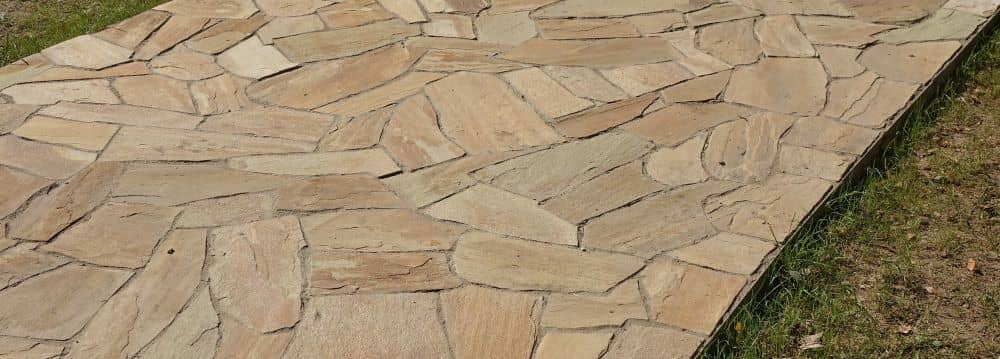Limestone Pavers: A Dynamic Duo of Desirable Elegance and Durable Strength
 When planning to upgrade the appearance of your outdoor property, consider the use of limestone blocks and pavers for the ground foundation, retaining walls, stairs, or other special features connected with your project. Why limestone? Because the desired sustainability and beauty of limestone are second to none and it offers you a one-and-done installation that lasts for generations.
When planning to upgrade the appearance of your outdoor property, consider the use of limestone blocks and pavers for the ground foundation, retaining walls, stairs, or other special features connected with your project. Why limestone? Because the desired sustainability and beauty of limestone are second to none and it offers you a one-and-done installation that lasts for generations.
One major advantage that limestone blocks Perth homeowners will be delighted with is the stone’s weather-friendly construction. Limestone stands up well in our seasonal changes from cold to hot. Additionally, unlike a concrete ground foundation that heats up in hot climates, a limestone paver deflects the sun’s heat, is slip-resistant, and remains cool underfoot when walked on without shoes. This is a big positive benefit when you, your family, and your guests are lounging around the swimming pool.
Limestone forms naturally over a long period. Evidence of the durability and splendour of natural limestone formations can be seen in the White Cliffs of Dover, the ancient El Capitan barrier reef in the Guadalupe Mountains National Park in the United States, and the more than 150 ancient underground caves throughout the Margaret River region. Evidence of the enduring strength and beauty of limestone used for construction can be seen in the ancient Great Pyramids of Giza and the remains of the centuries-old Megalithic Temples of Malta.
Basic Limestone Information
- What It Is: Limestone is a naturally formed biological sedimentary stone composed mostly of the mineral calcite. Other properties of limestone are the accumulation of coral, algae, fossils, shells, and an assortment of organic debris. Limestone formations date back several million years yet they have only become a popular, viable stone for construction purposes during the past 350,000 years.
- Where It Comes From: Limestone formations occur in nearly all of the world’s countries. The colours of the stones will depend on where they were formed. Typical colours are white, grey, crème, pink, coral, and brown. The majority of limestone comes from the ocean while other formations are mined from geysers, underground caves, and barrier reefs. The world’s largest limestone mine is located in the central Denmark village of Monsted. The locations where the stone is harvested are called quarries.
- Popular Uses: Limestone is a heavy-weight material that makes it a popular choice for use in building facades, pathways, outdoor stairs, pool decks, fish ponds, water fountains, fireplaces, patios, frames for entrance doors and outside windows, and many garden retaining walls. The stone can be cut in both thick and thin density depending on where it will be used.
Landscaping With Limestone Pavers
The limestone’s versatility, strength, aesthetic charm, practicality, and range of neutral tones are all positive reasons to incorporate this stone when creating new outdoor features. Another bonus to having limestone pavers and limestone blocks artistically situated throughout your property is the positive enhancement of the curb appeal as well as the increase in the value of your property. A real win-win scenario.
There is no limit to the versatility of limestone. It can be used to create an old-world ambience or a sleek, new-world metropolitan atmosphere. Smooth, polished limestone is very impressive and often resembles the elegant appearance of marble.
Unique limestone projects for personal luxury include a smooth-edged sunken garden getaway, permanent lawn tables and chairs, for the creation of a sundial, or as an outdoor shower stall. If you can think of it, you can create it with limestone.
Limestone Paver Maintenance
NOTE: When working with limestone you want to practice good occupational hygiene by wearing a face mask to avoid inhaling dust particles and wearing safety goggles to prevent eye injuries from flying particles.
1. Cleaning Limestone Pavers
Limestone, like all outdoor features, is exposed to all the climate changes that Mother Nature can serve up. This means that a natural collection of dirt, dust, and grime will accumulate as the seasons come and go. And, like all outdoor features, limestone needs regular cleaning to ensure its beauty never fades. Here are some tips for cleaning limestone pavers.
- Use a garden hose with an attached nozzle to loosen and spray away dirt, dust, leaves, grime, and flower petals. Spraying down the limestone surface two to three times a year eliminates debris build-up and minimizes the potential for surface scratches. If your limestone has a textured surface, it can be left to dry naturally. If your limestone has a smooth, polished surface, use a soft cloth or dry mop to dry and buff the finish.
- The garden hose will not wash away stains or sunbaked smudges. You will need to use a special neutral cleaning solution specifically created for use on natural stones such as limestone. Resist the temptation to use commercial brand cleaners that typically contain chemicals too abrasive for natural stones. Most hardware and home improvement stores have a selection of these special natural stone cleaners. Follow the manufacturer’s cleaning directions for a streak-free finish.
- If you have a sealant on your limestone that appears to be wearing off, you can reapply this protective coating after cleaning the stones. Be sure to use an appropriate sealant for limestone that will cover and fill in the tiny porous holes to prevent or minimize scratches from lawn furniture, flower pots, and other sharp objects.
2. Sealing Limestone Pavers
Whether to seal or not seal the surface of your limestone blocks and pavers is a personal choice. However, sealing limestone pavers will preserve the stone’s natural aesthetic beauty and prolong the stone’s durability. A quality sealant provides a layer of protection against the accumulation of dirt, grime, mould, and mildew. You want to use a special stone sealer that is designed to penetrate the small pores of dense limestone. You can purchase limestone sealers at hardware or home improvement stores. Be sure to follow the manufacturer’s directions.
3. Painting Limestone Pavers
The Bibra Lake Soils selection of limestone blocks and pavers is available in the most popular sizes, shapes, and colours to enhance your landscaping projects. You can alter the shade or change the colour of your limestone to complement or highlight your personal property tones. The home decorating website, hunker.com, offers a simple, easy to understand the technique for DIY limestone painting.
We invite you to visit our Bibra Lake Soils location to see our full range of limestone products. We are located at 222 Barrington Street, Bibra Lake WA 6163, and conveniently open daily to the public. We are here to help with all of your lawn and garden projects. You can call us at (08) 9434 2290 to speak with one of our friendly, knowledgeable staff members, you can send us an email at info@bibralakesoils.com.au, or leave us a message on our Contact page.



